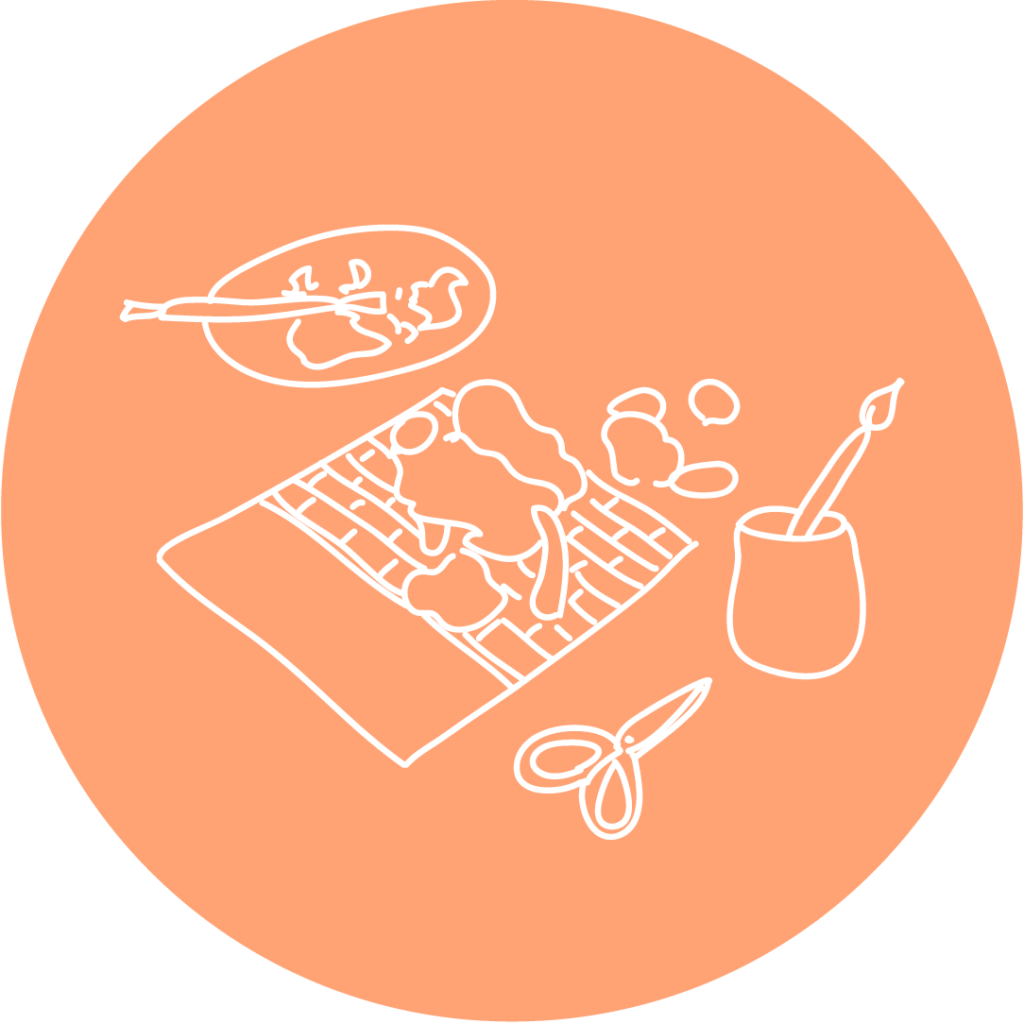Home / MODELS
Recommended age: 5 – 18 years
Location: Indoors.
Time required: 1-2 hours
Materials/tools: Craft materials depending on age and purpose
Purpose: Versatile tool, can be used on its own to refine an idea or to start developing an idea.
Where in the process: Vision and concept phase

Children who like to do crafts usually enjoy this method. They easily immerse themselves in the creation and very imaginative ideas often come out of this method. Different materials trigger the imagination and you sometimes have to be careful with the choice of materials so that it does not influence the creation of ideas too much in any direction. You can try working with only one material, as in the example of clay below, or balance the choice of materials so that the different materials are equally appealing.
This method is also good because it is very self-paced. It keeps the children busy and you as an adult can focus on moving from one individual to the next, asking questions and documenting the children’s thoughts. We usually have a question form with us where we have prepared questions that we are interested in getting answers to, but we also have blank paper for all spontaneous thoughts and ideas that come from the children.
Clay models: If you have come so far in your work that you have decided what to make a model of and you are working with younger children, it can be good to limit the material to clay, for example. Clay is easy to work with and the focus is not on the material itself.
Models with many different materials: The advantage of offering many materials is that the activity becomes more self-sustaining. When we adults can focus more on the conversation with the children and less on being a craft helper, we can document more and get more information from the children.
Gather different types of materials such as clay, toilet paper rolls, pipe cleaners, cardboard, ice-cream sticks, coloured paper, fabrics, and tools such as scissors, glue gun, glue sticks, etc. Make a buffet table with materials and a workshop table.
Set up the materials in a visible and easily accessible place. You can either let the children create freely or set certain frames such as dream playground, artwork, etc. Talk to the children while they create and take notes of what they say.
You need to have an analysis session after the workshop where you, as adults, sort out all the information provided by the workshop. An easy way is to use post-its by writing down all the ideas, wishes and needs expressed by the children. One thing per note! When all the notes have been written, the puzzle begins to find patterns in what the children have expressed. Do they seem to be missing meeting places? Or challenging play equipment? What kind of colour and shape are they talking about? What kind of meetings and community are they looking for? The analysis sessions are often intensive but very rewarding work sessions for the working group. In order for the analysis sessions to be successful, it is good to decide what the goal of the session should be. For example, one goal could be to decide what problems you need to focus on solving in the development process.
The method can be used on its own or as part of a longer process.
In the book DREAM PLAY BUILD by James Rojas and John Kamp you can find inspiration for model building!
We use cookies to give you the best experience on our website. If you continue to use this website, you agree to the use of cookies.
Vi använder cookies för att ge dig den bästa upplevelsen på vår hemsida. Om du fortsätter att använda den här webbplatsen godkänner du detta.